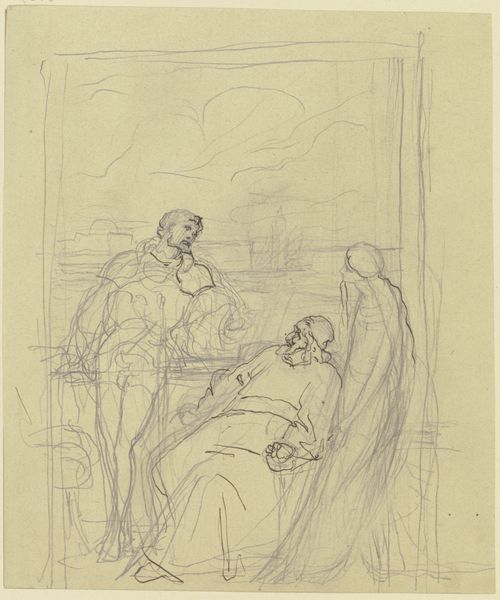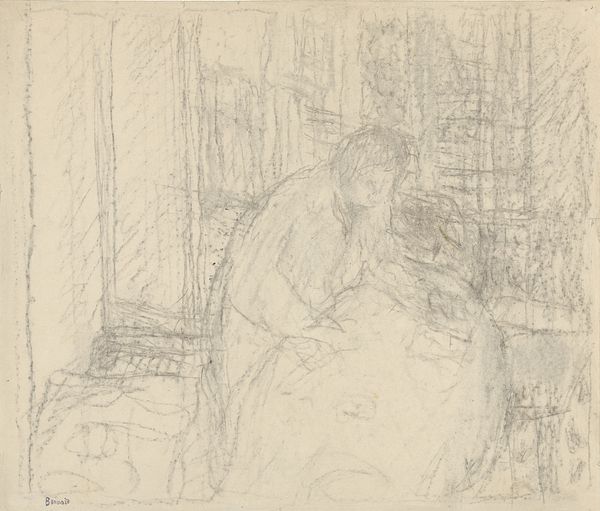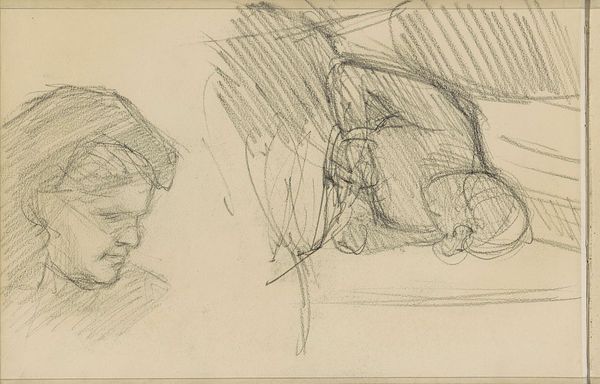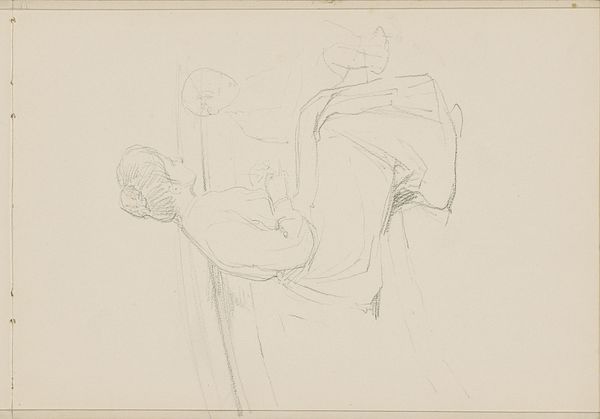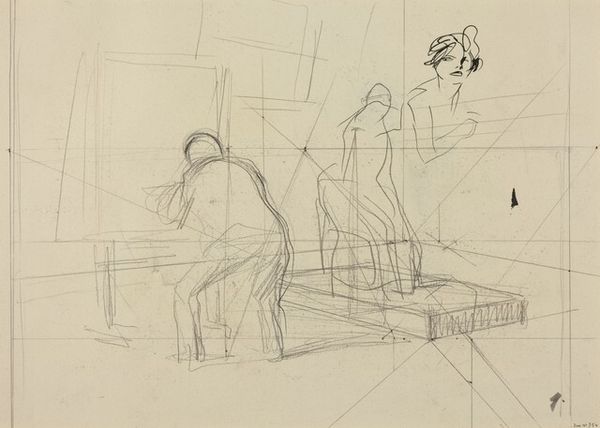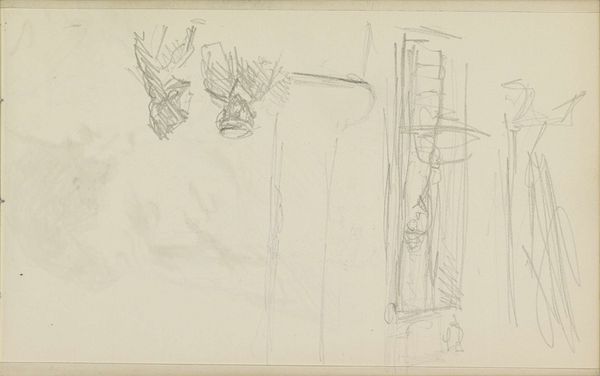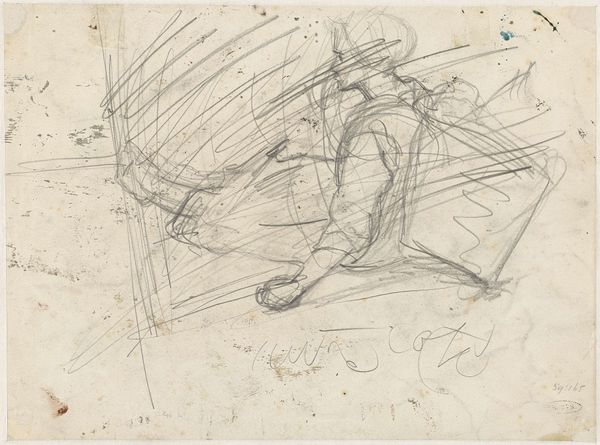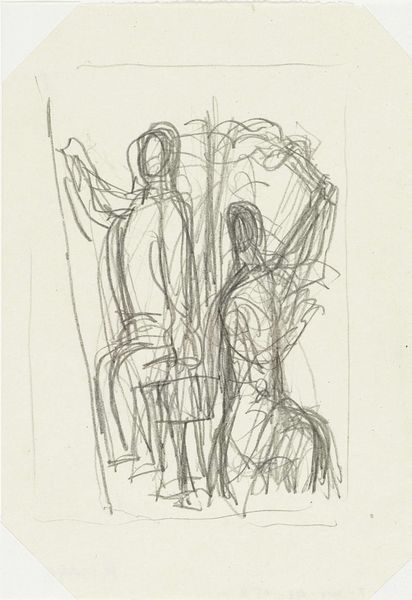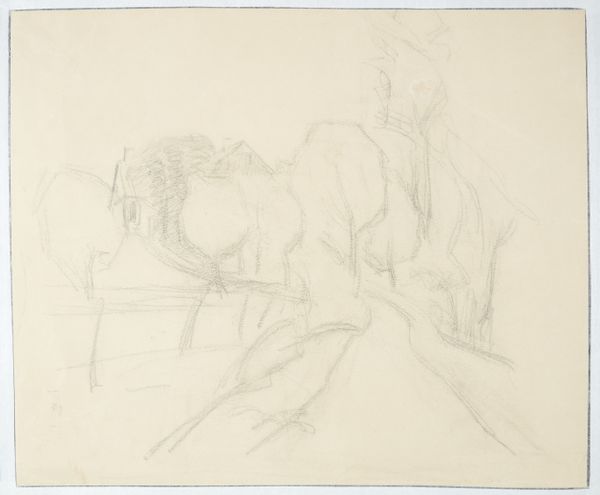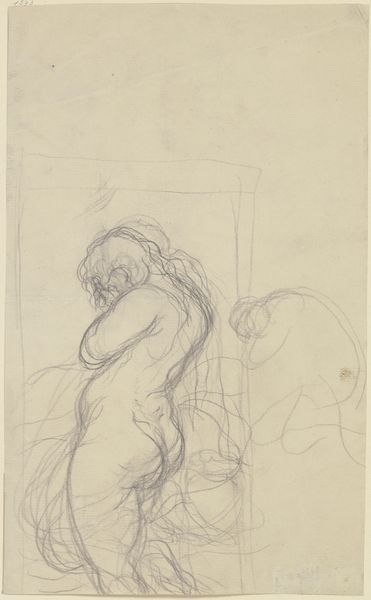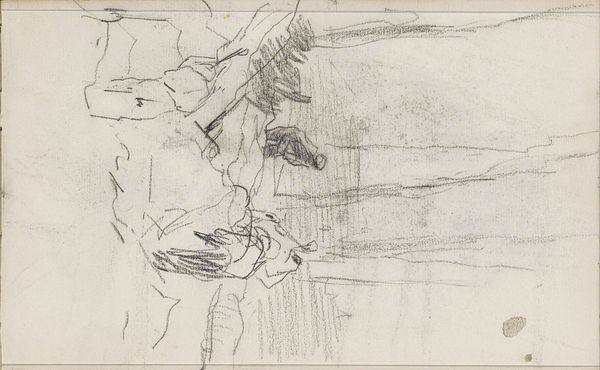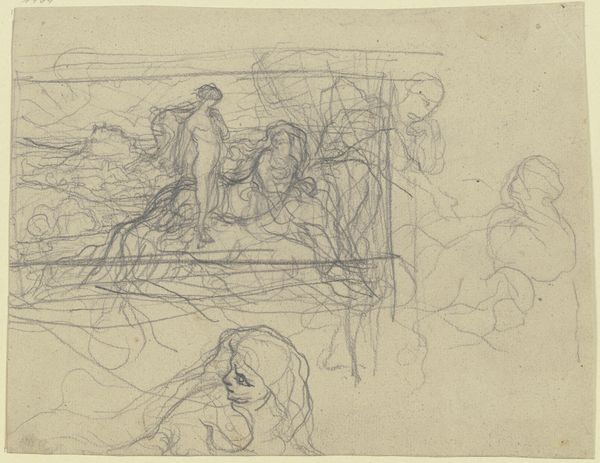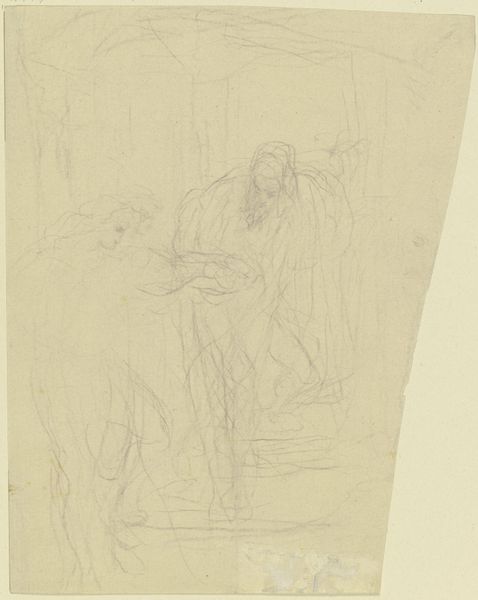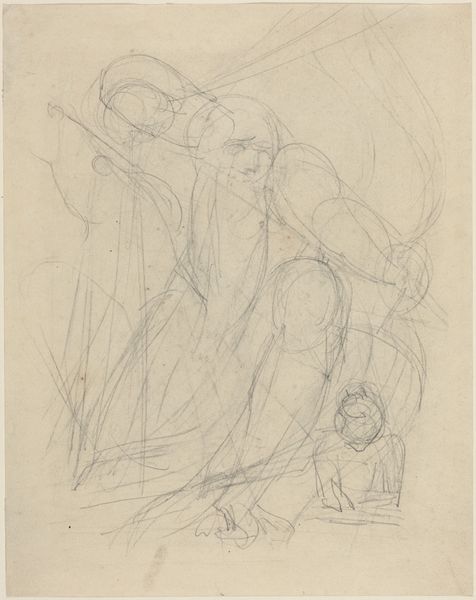
Sitzender Mann, sich einer links stehenden (weiblichen_) Gestalt zuwendend
0:00
0:00
drawing, paper, pencil
#
portrait
#
drawing
#
16_19th-century
#
figuration
#
paper
#
german
#
romanticism
#
pencil
Copyright: Public Domain
Curator: This intriguing pencil drawing is titled *Sitzender Mann, sich einer links stehenden (weiblichen_) Gestalt zuwendend*, which translates to "Seated Man Turning to a (Female) Figure Standing on the Left." It’s by Victor Müller. Editor: Immediately, there's a fragility that strikes me. The lines are so tentative, almost ethereal. The seated figure, while seemingly the focal point, feels almost lost within the sketchiness of the overall composition. Curator: Precisely. Müller, associated with the German Romanticism movement, masterfully employs line work to suggest form rather than define it. Observe how the negative space around the figures contributes just as much to the overall image as the pencil marks themselves. Consider it in relation to Friedrich's landscapes. Editor: And the contrast in definition is quite compelling. The seated man is slightly more rendered than the female figure, who appears almost ghostly, a mere suggestion of a person. What do we know of the social conditions when Müller sketched it? Curator: Although undated, Müller likely produced this drawing sometime during the 19th century. One reads an encounter shaped perhaps by class and education, even a dreamlike encounter from that moment. The pencil medium itself lends a certain immediacy and intimacy to the scene, almost as if we’re viewing a private moment. Editor: Yes, the lack of firm lines creates a psychological space, suggesting that what is not shown may be more crucial than what is depicted, evoking a sense of yearning. The almost sketched grid or window also creates this claustrophobic interior. This all might reference that time, as well. What are we looking at beyond the figures, their composition and how it represents yearning? Curator: It challenges the conventions of portraiture. It asks the viewer to participate in the construction of meaning. To question the solidity of form itself, to consider representation in its incompleteness. Editor: The power lies in what is absent, not present. It’s really something. I’m walking away thinking about the societal structures influencing our gaze, our perception of reality versus the figures within it. Curator: An insightful observation, bringing into sharp relief not only the aesthetic experience the image solicits, but the sociohistorical frameworks with which we see and decode.
Comments
No comments
Be the first to comment and join the conversation on the ultimate creative platform.
